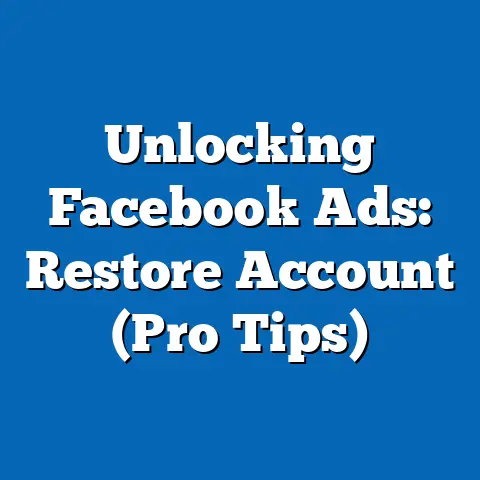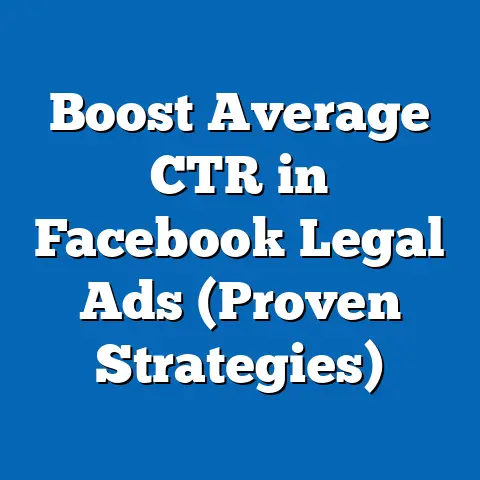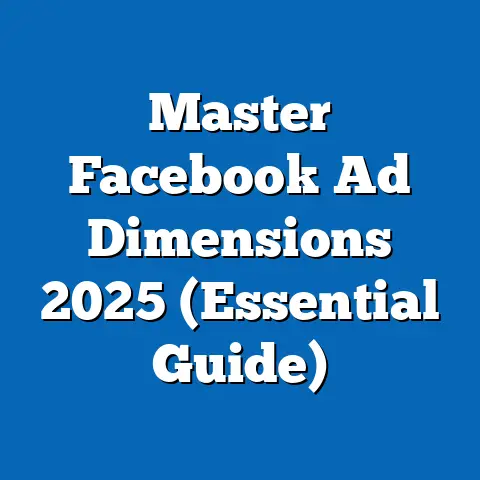Unlock Nonprofit Potential (Maximize Facebook Ad Credits)
In an era where digital presence can make or break an organization’s ability to connect with its audience, access to advertising platforms like Facebook represents a form of modern luxury for nonprofits. This “luxury” is not defined by extravagance or exclusivity in the traditional sense but by the rare and powerful opportunity to amplify a mission-driven message to a global audience at minimal cost. For nonprofits, often constrained by limited budgets and competing priorities, the ability to leverage tools like Facebook Ad Credits—offered through programs such as Meta’s social impact initiatives—can be transformative, providing a gateway to visibility and engagement that would otherwise be out of reach.
This luxury of digital reach comes with defining characteristics: accessibility to sophisticated advertising tools, the potential for targeted outreach, and the capacity to scale impact without proportional increases in expenditure. Historically, advertising has been a domain dominated by for-profit entities with substantial budgets, leaving nonprofits to rely on grassroots efforts or donated media space. The advent of digital platforms, coupled with corporate social responsibility programs like Meta’s ad credit offerings, has shifted this paradigm, democratizing access to high-impact marketing tools since the early 2010s.
The societal implications of this shift are profound. Nonprofits can now compete for attention in crowded digital spaces, raising awareness for critical causes, mobilizing communities, and driving donations or volunteerism on a scale previously unimaginable. However, this luxury also comes with challenges—navigating the complexities of digital advertising, ensuring ethical use of data, and measuring true impact. This article explores how nonprofits can unlock their potential by maximizing Facebook Ad Credits, delving into the historical context of digital advertising for social good, the characteristics of effective ad campaigns, and the broader implications for nonprofit sustainability and societal change.
Historical Context: The Evolution of Advertising Access for Nonprofits
The journey of nonprofits in the advertising space reflects broader societal and technological shifts. In the mid-20th century, nonprofit organizations relied heavily on traditional media—print ads, radio spots, and television public service announcements (PSAs)—often provided at discounted rates or through donated airtime as part of corporate goodwill initiatives. While these channels offered some visibility, they were limited by geographic reach, high production costs, and lack of precise audience targeting.
The rise of the internet in the late 1990s and early 2000s marked a turning point, introducing new possibilities for outreach through websites, email campaigns, and early social media platforms. However, paid digital advertising remained prohibitively expensive for most nonprofits until platforms like Google and Facebook began offering grants and credits as part of their corporate social responsibility efforts. Google’s Ad Grants program, launched in 2003, was a pioneer, providing free advertising on its search engine to eligible nonprofits. Following suit, Meta (then Facebook) introduced its Ad Credits for Nonprofits program in the early 2010s, aligning with a growing recognition of the role digital tools could play in amplifying social good.
This historical shift was shaped by several key events: the global financial crisis of 2008, which tightened nonprofit budgets and increased demand for cost-effective solutions; the explosive growth of social media, which transformed how individuals engage with causes; and increasing pressure on tech giants to demonstrate social impact amid scrutiny over data privacy and monopolistic practices. Today, Meta’s program offers up to $10,000 per month in ad credits to qualifying nonprofits, providing a lifeline for organizations aiming to expand their reach without straining their finances. Understanding this context is critical to appreciating the luxury of access nonprofits now enjoy—and the responsibility to use it effectively.
Defining Characteristics of Facebook Ad Credits as a Nonprofit Resource
Facebook Ad Credits represent a unique resource for nonprofits, characterized by several key features that distinguish them from traditional advertising avenues. First, they offer unparalleled targeting capabilities, allowing organizations to reach specific demographics based on age, location, interests, and behaviors—a level of precision that maximizes relevance and engagement. For instance, a nonprofit focused on environmental education can target users who follow sustainability pages or live in areas affected by climate change, ensuring their message resonates with the right audience.
Second, the scalability of impact is a defining trait. Unlike traditional media, where costs rise linearly with exposure, ad credits enable nonprofits to test campaigns on a small scale, refine their approach using real-time analytics, and then expand reach without additional financial burden. This flexibility is a luxury in itself, as it mitigates the risk of wasted resources—a perennial concern for budget-conscious organizations.
Third, the credits embody accessibility, breaking down barriers that once excluded smaller or less-funded nonprofits from high-impact advertising. While the application process and eligibility criteria (such as registration as a 501(c)(3) in the U.S. or equivalent status elsewhere) can pose initial hurdles, once approved, organizations gain access to a platform that levels the playing field against for-profit competitors. However, this accessibility is not without caveats—nonprofits must invest time and expertise to craft effective campaigns, a challenge for those without dedicated marketing staff.
Generational Dynamics in Nonprofit Digital Outreach
Nonprofits must also consider generational dynamics when leveraging Facebook Ad Credits, as different age groups interact with digital platforms in distinct ways. Baby Boomers (born 1946–1964), shaped by post-war optimism and traditional media, are increasingly active on Facebook, with Pew Research Center data indicating that 70% of U.S. adults aged 50–64 use the platform as of 2021. They often respond to emotionally compelling narratives and calls to action tied to legacy causes like health research or veterans’ support.
Generation X (born 1965–1980), often balancing career and family responsibilities, values efficiency and authenticity in messaging. They are likely to engage with ads that offer clear, actionable ways to contribute, such as one-click donation links or volunteer sign-ups. Their formative years, marked by economic uncertainty and the early internet, make them skeptical of overly polished campaigns, favoring transparency.
Millennials (born 1981–1996), a key demographic on social media, prioritize causes aligned with social justice, environmental sustainability, and community impact. Having grown up during the digital revolution, they are adept at navigating online spaces and expect interactive, visually rich content. Studies show Millennials are more likely to share nonprofit campaigns on their networks, amplifying reach organically if the content resonates.
Generation Z (born 1997–2012), the digital natives, are shaped by constant connectivity and global awareness through platforms like Instagram and TikTok, though many still use Facebook for community engagement. They value authenticity and are quick to call out performative activism, meaning nonprofits must ensure their campaigns reflect genuine commitment. Short, impactful video ads often perform best with this cohort.
Understanding these generational nuances is critical for nonprofits using ad credits, as misaligned messaging can lead to wasted resources. Tailoring content to each group’s values, communication styles, and technological comfort levels ensures maximum engagement—a luxury that precise targeting tools make possible.
Societal Implications: Amplifying Impact in a Digital Age
The availability of Facebook Ad Credits has far-reaching implications for society, reshaping how nonprofits influence public discourse and drive change. At a macro level, these credits empower organizations to address systemic issues—poverty, climate change, health disparities—by raising awareness and mobilizing resources at scale. For example, during the COVID-19 pandemic, nonprofits used ad credits to disseminate critical information about vaccine access and safety protocols, reaching vulnerable populations who might otherwise have been overlooked.
On a cultural level, this digital luxury fosters a more inclusive narrative landscape. Nonprofits representing marginalized communities can amplify voices that are often sidelined in mainstream media, challenging stereotypes and promoting equity. A 2022 report by Meta highlighted that over 200,000 nonprofits worldwide have utilized ad credits, with many focusing on advocacy for underrepresented groups—an outcome that strengthens social cohesion.
Economically, the credits contribute to nonprofit sustainability by reducing marketing costs, allowing more funds to be allocated to programs and services. This efficiency can enhance donor trust, as supporters see their contributions directly impacting outcomes rather than overhead. However, there’s a flip side: over-reliance on digital tools risks widening the gap between tech-savvy organizations and those lacking digital literacy, potentially exacerbating inequities within the nonprofit sector itself.
Technological Factors: Navigating the Digital Advertising Landscape
The technological underpinnings of Facebook Ad Credits are central to their value—and their complexity. Meta’s advertising platform uses sophisticated algorithms to optimize ad delivery, ensuring content reaches users most likely to engage. Nonprofits can choose from various ad formats—carousel ads, video ads, lead generation forms—each suited to different objectives, whether raising awareness, driving donations, or building email lists.
However, mastering these tools requires a learning curve. Nonprofits must understand metrics like click-through rates (CTR), cost-per-click (CPC), and conversion rates to evaluate campaign success. A 2021 study by Nonprofit Tech for Good found that only 40% of nonprofits using digital ads felt confident in interpreting analytics, highlighting a gap in capacity that can undermine the luxury of access.
Moreover, privacy concerns loom large. Meta’s reliance on user data for targeting has faced criticism, especially after scandals like Cambridge Analytica. Nonprofits must balance the benefits of precise outreach with ethical considerations, ensuring transparency about data use and adhering to regulations like GDPR or CCPA. Failure to do so risks reputational damage, which can be devastating for mission-driven organizations.
Economic Considerations: Maximizing Limited Resources
Economically, Facebook Ad Credits offer nonprofits a rare opportunity to stretch limited budgets. With traditional advertising costs often ranging from $5,000 to $50,000 for a single campaign, the ability to access up to $10,000 monthly in credits is a game-changer. This financial relief enables smaller organizations to compete with larger ones, democratizing impact.
Yet, economic constraints persist beyond the credits themselves. Nonprofits often lack the staff or expertise to design compelling ads or analyze performance data, necessitating investment in training or outsourcing—a cost not covered by credits. Additionally, while the credits are free, they come with a cap, and overspending (if campaigns are not carefully monitored) can lead to unexpected expenses once the limit is exceeded.
Strategic allocation is key. Experts recommend focusing credits on high-impact campaigns tied to specific goals, such as year-end fundraising drives or emergency response efforts. Diversifying outreach—combining paid ads with organic social media content—can also sustain engagement without exhausting credits prematurely.
Social and Cultural Factors: Building Trust and Community
Socially, Facebook Ad Credits enable nonprofits to build communities around shared causes, fostering a sense of belonging among supporters. Ads can drive users to join groups, attend virtual events, or participate in campaigns, creating a feedback loop of engagement. For instance, organizations like Charity: Water have used targeted ads to build a global donor base, sharing stories of impact that resonate culturally across diverse audiences.
Culturally, the credits allow nonprofits to tailor messaging to reflect local values or global trends. A campaign addressing food insecurity in the U.S. might emphasize community solidarity, while one in a different region could focus on cultural traditions of mutual aid. This adaptability is a luxury that enhances relevance but requires cultural competence to avoid missteps or appropriation.
Trust remains a critical factor. In an era of misinformation, nonprofits must ensure their ads are transparent and verifiable, linking to credible sources and avoiding sensationalism. A 2020 Edelman Trust Barometer report found that 64% of global respondents trust nonprofits over other institutions, but this trust can erode if campaigns appear manipulative or inauthentic.
Challenges and Nuances: Avoiding Pitfalls in Digital Advertising
While Facebook Ad Credits offer immense potential, they are not a panacea. One major challenge is the risk of “ad fatigue,” where overexposure to campaigns leads to declining engagement. Nonprofits must continually refresh creative content and test new approaches, a process that demands time and resources many lack.
Another nuance is the diversity within target audiences. Even within generational cohorts, individuals vary widely in their values, experiences, and digital behaviors. A one-size-fits-all campaign risks alienating segments of the audience, underscoring the need for segmentation and personalization—tools that Meta’s platform provides but that require expertise to implement effectively.
Additionally, not all nonprofits qualify for credits, particularly those in regions where Meta’s program is not fully rolled out or where legal restrictions apply. This disparity highlights the uneven distribution of digital luxury, reinforcing the need for broader capacity-building initiatives to ensure equitable access.
Workplace Implications: Building Digital Capacity in Nonprofits
For nonprofit staff, the advent of tools like Facebook Ad Credits necessitates a shift in skills and priorities. Marketing and communications roles, once secondary to program delivery, are now central to organizational success. Training in digital advertising, data analysis, and content creation is essential, yet a 2022 survey by NTEN found that 60% of nonprofit employees reported inadequate access to such professional development.
Leadership must also adapt, recognizing digital outreach as a strategic priority rather than an add-on. Allocating resources—whether hiring specialists or partnering with pro bono agencies—can maximize the value of ad credits. Collaborative models, where multiple nonprofits pool expertise to run joint campaigns, offer another solution, particularly for smaller organizations.
Forward-Looking Insights: The Future of Digital Luxury for Nonprofits
Looking ahead, the role of Facebook Ad Credits in nonprofit ecosystems is likely to evolve with technological and societal trends. Emerging tools like artificial intelligence could further refine targeting and content creation, making campaigns even more effective—but also raising ethical questions about automation and bias. Meta’s commitment to social impact may expand, potentially increasing credit allocations or offering complementary resources like training programs.
However, uncertainties remain. Regulatory changes around data privacy could restrict targeting capabilities, while platform algorithm updates might alter ad performance overnight. Nonprofits must stay agile, diversifying their digital strategies to include other platforms (e.g., Instagram, TikTok) and offline channels to mitigate risks.
Economically, as competition for donor dollars intensifies, the pressure to demonstrate return on investment (ROI) from ad campaigns will grow. Nonprofits that master storytelling, analytics, and audience engagement will likely thrive, while those unable to adapt may struggle to maintain relevance. The luxury of digital reach, while powerful, is not guaranteed—it demands continuous effort and innovation.
Socially, the potential for nonprofits to shape global conversations through tools like ad credits is immense. As issues like climate change, inequality, and public health remain urgent, these organizations can lead the charge in mobilizing collective action. Yet, they must balance scale with authenticity, ensuring their digital presence reflects their core values rather than chasing trends.
Conclusion: Harnessing Digital Luxury for Lasting Impact
Facebook Ad Credits represent a modern luxury for nonprofits—a rare opportunity to access cutting-edge advertising tools and reach vast audiences without the prohibitive costs traditionally associated with such outreach. Rooted in a historical shift toward digital democratization, shaped by technological innovation, and influenced by generational, economic, and cultural factors, this resource offers a pathway to amplify impact in ways previously unimaginable. Yet, it is not without challenges, from capacity constraints to ethical dilemmas, requiring nonprofits to approach this luxury with strategy and care.
As society moves deeper into a digital age, the ability to maximize tools like ad credits will increasingly define nonprofit success. By understanding their audience’s diverse needs, investing in digital skills, and maintaining transparency, organizations can transform this luxury into lasting change. The future is uncertain, but one thing is clear: for nonprofits willing to adapt, the potential to unlock their mission’s full reach has never been greater.






